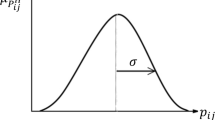Abstract
The main objective of image de-noising is to remove the noise present in the noisy image. Like that, main objective of proposed methodology is to restore the impulse noised standard test image based on hybrid filter, fuzzy logic system and genetic algorithm. The proposed HFGOA method consists of three steps. In the first step noisy image is de-noised using mean filter and median filter, individually. In the second step the difference vector is calculated using two filters output then it is given as input to fuzzy logic system. Fuzzy rules were generated from the difference vector value using triangular membership function. In the third step using genetic optimization algorithm optimal rule will be selected. Fitness value (PSNR) calculated for each population. The new population was repeatedly created using genetic operator until getting best fitness value. The performance of the proposed method was measured using PSNR value. HFGOA method is tested over standard test image (lena image) for different percentage of salt and pepper noise. The Experimental results of HFGOA method is compared with results of different exiting filters. An experimental result shows the HFGOA method rectifies the drawbacks of exiting filters and increases the visual quality of the image by increasing the PSNR value.













Similar content being viewed by others
References
Ahmed F, Das S (2014) Removal of high-density salt-and-pepper noise in images with an iterative adaptive fuzzy filter using alpha-trimmed mean. IEEE Trans Fuzzy Syst 22(5):1352–1358
Aubert G, Kornprobst P (2006) Mathematical problems in image processing—partial differential equations and the calculus of variations, 2nd edn. Springer, New York
Benjamin L, McGlamery (1967) Restoration of turbulence-degraded images. J Opt Soc Am 57(3):293–297
Chan RH, Ho CW, Nikolova M (2005) Salt and pepper noise removal by median type noise detectors and detail-preserving regularization. IEEE Trans Image Process 14(10):1479–1485
Deivalakshmi S, Palanisamy P (2016) Removal of high density salt and pepper noise through improved tolerance based selective arithmetic mean filtering with wavelet thresholding. AEU - Int J Electron Commun 70(6):757–776
Fullér R, Hassanein H, Ali AN (1996) Neural fuzzy systems: towards IMT-advanced networks. Åbo: Åboakademi xxvii:275 ISBN 95–165–0624-0
Gonzalez RC, Woods RE (2011) Digital image processing. Third Impression, Pearson Prentice Hall
Habib M, Hussain A, Rasheed S, Ali M (2016) Adaptive fuzzy inference system based directional median filter for impulse noise removal. AEU - Int J Electron Commun 70(5):689–697
James L, Harris (1966) Image evaluation and restoration. J Opt Soc Am 56(5):569–574
Kaehler SD (1998) Fuzzy Logic Tutorial. Seattle Robotics Society [online. Availableat: http://www.seattlerobotics.org/encoder/mar98/fuz/flindex.html
Li Y, Sun J, Luo H (2014) A neuro-fuzzy network based impulse noise filtering for gray scale images. Neuro computing 127:190–199
Lin CH, Tsai JS, Chiu CT (2010) Switching bilateral filter with a texture/noise detector for universal noise removal. IEEE Trans Image Process 19(9):2307–2320
Liu L, Chen CLP, Zhou Y, You X (2015) A new weighted mean filter with a two-phase detector for removing impulse noise. Inf Sci 315:1–16
Nadernejad E, Korhonen J, Forchhammer S, Burini N (2013) Enhancing perceived quality of compressed images and video with anisotropic diffusion and fuzzy filtering. Signal Process Image Commun 28(3):222–240
Ross TJ, HASSANEIN H, ALI AN (2010) Fuzzy logic with engineering applications: design and stability analysis, vol xxvii, 3rd edn. (RoyaumeUni): Wiley, Chichester, p 275 ISBN 978–047–0748-510
Russo F, Ramponi G (1996) A fuzzy filter for images corrupted by impulse noise. IEEE Signal Process Lett 3(6):168–170
Schulte S, Nachtegael M, De Witte V, Van der Weken D, Kerre EE (2006) A fuzzy impulse noise detection and reduction method. IEEE Trans Image Process 15(5):1153–1162
Senthilselvi A, Sukumar R (2014) A survey on image restoration technique. Int J Emerg Eng Res Technol 2(8):123–128
Senthilselvi A, Sukumar R (2018) Removal of salt and pepper noise from images using hybrid filter (HF) and fuzzy logic noise detector (FLND). J Concurr Comput: Pract Experience. https://doi.org/10.1002/cpe.4501
Toh KKV, Isa NAM (2010a) Noise adaptive fuzzy switching median filter for salt and pepper noise reduction. IEEE Signal Process Lett 17(3):281–284
Toh KKV, Isa NAM (2010b) Cluster-based adaptive fuzzy switching median filter for universal impulse noise reduction. IEEE Trans Consum Electron 56(4):2560–2568
Wang L-X, Hassanein H, Ali AN (1994) Adaptive fuzzy systems and control: design and stability analysis, vol xxvii. Prentice Hall, Englewood Cliffs, N.J, p 275 ISBN978–013–1471-092
Zhang S, Karim MA (2002) A new impulse detector for switching median filters. IEEE Signal Process Lett 9(11):360–363
Zhang K, Zuo W, Chen Y, Meng D, Zhang L (2017) Beyond a Gaussian Denoiser: residual learning of deep CNN for image denoising. IEEE Trans Image Process 26(7):3142–3155
Zhou Z (2012) Cognition and removal of impulse noise with uncertainty. IEEE Trans Image Process 21(7):3157–3167
Zuo ZY, Zhang TX, Hu J, Zhou G (2013) A new method for removing impulse noisebased on noise space characteristic. Optik 18(124):3503–3509
Ramesh S, Ganesh Kumar P (2013) A comparative analysis of routing techniques in intermittently connected MANETs. Asian Journal of Scientific Research 6(4):736–744
Ramesh S, Ganesh Kumar P (2014) A secure 3-way routing protocols for intermittently connected mobile Ad Hoc networks. Sci World J 2014:1–13
Author information
Authors and Affiliations
Corresponding author
Additional information
Publisher’s note
Springer Nature remains neutral with regard to jurisdictional claims in published maps and institutional affiliations.
Rights and permissions
About this article
Cite this article
Senthil Selvi, A., Kumar, K.P.M., Dhanasekeran, S. et al. De-noising of images from salt and pepper noise using hybrid filter, fuzzy logic noise detector and genetic optimization algorithm (HFGOA). Multimed Tools Appl 79, 4115–4131 (2020). https://doi.org/10.1007/s11042-019-7727-9
Received:
Revised:
Accepted:
Published:
Issue Date:
DOI: https://doi.org/10.1007/s11042-019-7727-9




